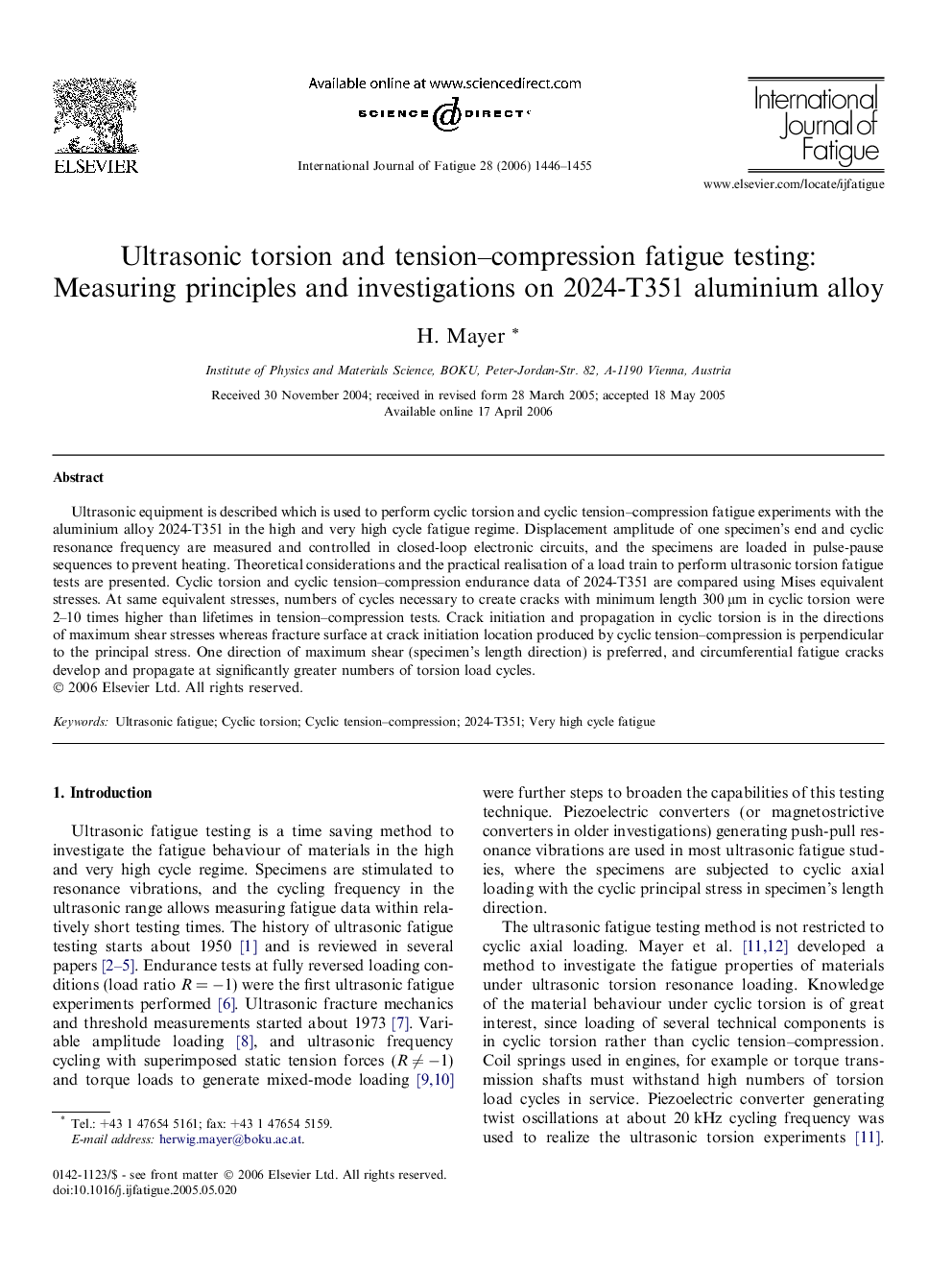| Article ID | Journal | Published Year | Pages | File Type |
|---|---|---|---|---|
| 778640 | International Journal of Fatigue | 2006 | 10 Pages |
Ultrasonic equipment is described which is used to perform cyclic torsion and cyclic tension–compression fatigue experiments with the aluminium alloy 2024-T351 in the high and very high cycle fatigue regime. Displacement amplitude of one specimen’s end and cyclic resonance frequency are measured and controlled in closed-loop electronic circuits, and the specimens are loaded in pulse-pause sequences to prevent heating. Theoretical considerations and the practical realisation of a load train to perform ultrasonic torsion fatigue tests are presented. Cyclic torsion and cyclic tension–compression endurance data of 2024-T351 are compared using Mises equivalent stresses. At same equivalent stresses, numbers of cycles necessary to create cracks with minimum length 300 μm in cyclic torsion were 2–10 times higher than lifetimes in tension–compression tests. Crack initiation and propagation in cyclic torsion is in the directions of maximum shear stresses whereas fracture surface at crack initiation location produced by cyclic tension–compression is perpendicular to the principal stress. One direction of maximum shear (specimen’s length direction) is preferred, and circumferential fatigue cracks develop and propagate at significantly greater numbers of torsion load cycles.
